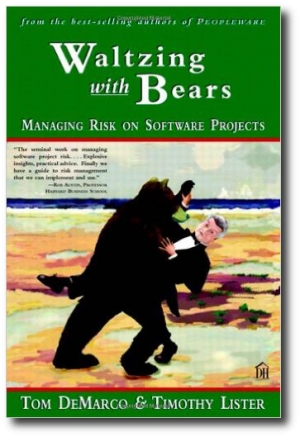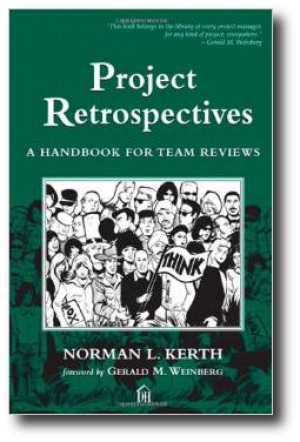Todd Williams
People Make Projects Fail
The other day a friend said that there were three reasons for project failure. I took exception and stated there were two. As I thought about it more, there is only one. People are at the root of all failures, everything else is a symptom. Let’s look at some common reasons.
The project is over constrained. People set the constraints. If they do not understand the project well enough to set the constraints, or listen to the people that are suggesting the constraints, then they are the problem.
People or Process: Which Impacts Project Success More?
Executives build PMOs to ensure people follow a process. Companies require project management certification. Project managers have religious battles over agile and waterfall. Mistakes occur and managers implement more processes to prevent their reoccurrence. Yet there is another philosophy that says this is the wrong direction completely. This ideology feels that people need more independence and less bureaucracy. The people who follow this think that people need more leadership training. People or Process, as the name implies, looks directly at these arguments and the role of people versus process in a project's or an organization’s success or failure.
References
Todd C. Williams - Keynoter and Educator
 |
 |
This email address is being protected from spambots. You need JavaScript enabled to view it. |  |
 Todd Williams is a keynoter, educator, and coach using decades of experience to help people and organizations improve their organizations and their project.
Todd Williams is a keynoter, educator, and coach using decades of experience to help people and organizations improve their organizations and their project.
A strong comprehensive strategic foundation coupled with operational excellence allows companies to build the capabilities to thrive. Todd Williams’ goal is to improve how companies implement their strategic plans—from definition to ensuring the proper people are in place. His passion is removing corporate roadblocks and bridging the gaps from vision to profitability. Experience in business and technology uniquely qualify him to help define and implement the best operational structures based on the company’s goals. Utilizing thirty years of experience he helps companies ranging from start-ups to multi-billion dollar corporations achieve their goals. Qualifications in executive consulting, project rescue, failure prevention, and engaging people in the solution, allow him to help you bring strategy to life.
Meet Todd...
By understanding the reasons for failure, organizations can become resistant to it. His mantra is “Strategy, People, Process, and then Technology” and he specializes in rescuing projects and helping organizations drive business value from their strategy.
As an expert witness, Mr. Williams has used his skills to assist companies that have fallen prey to unqualified third-party integrators that were not focused on the correct methodology or delivering an end result that provided a useable solution.
He has published two books:
Filling Execution Gaps: How Executives And Project Managers Turn Corporate Strategy Into Successful Projects (De|G Press, 2017) on filling the six gaps that are at the root of organization and project failure.
Rescue the Problem Project: A Complete Guide to Identifying, Preventing, and Recovering from Project Failure (HarperCollins, 2011), defines a project audit and recovery process for rescuing red projects that focuses on root cause correction and prevention.
He is a professional member of the Association for Corporate Growth (ACG), Project Management Institute, and the Society for Information Management (SIM). He has been chosen to speak to numerous companies and professional organizations, including NASA, BEA Systems, Houghton-Mifflin-Harcourt, Portland General Electric, and Bonneville Power Administration.
Waltzing with Bears: Managing Risk on Software Projects, by Tom DeMarco and Timothy Lister
Add To Cart |
|
| Author: | Tom DeMarco, Timothy Lister |
|---|---|
| Publisher: | Dorset House |
| Released: | March 2003 |
| Type: | Softcover |
| Pages: | 144 |
| ISBN: | 0670034576 |
This book is currently under review, more details will be added when available
The publisher says:
"Greater risk brings greater reward, especially in software development. A company that runs away from risk will soon find itself lagging behind its more adventurous competition. By ignoring the threat of negative outcomes—in the name of positive thinking or a can-do attitude—software managers drive their organizations into the ground.
"In Waltzing with Bears, Tom DeMarco and Timothy Lister—the best-selling authors of Peopleware—show readers how to identify and embrace worthwhile risks. Developers are then set free to push the limits.
Toyota: Saga of Success by N Kalai Selvan (Todd Williams contributing author)
Add To Cart |
|
| Author: | N Kalai Selvan |
|---|---|
| Publisher: | The ICFAI University Press |
| Released: | October 2008 |
| Type: | Softcover |
| Pages: | 266 |
| ISBN: | 9788131420232 |
Toyota: Saga of Success
by N Kalai Selvan
Toyota: A Saga of Success is a compilation of works from sixteen different authors worldwide. The book looks at a variety of different aspects for Toyota's Success. Todd Williams provided Chapter 4, which is a reprint of the article The Toyota Way.
From the Publisher:
Toyota Motor Corporation is the success story of 21st century automobile industry. After the Second World War, the company concentrated on the small passenger car production segment. Initially, Toyota was producing automobiles in Japan and exporting them to other countries. Today, Toyota has become world's largest automaker from a small Japanese automaker through its unique production system and innovation. The Toyota Corporation operates through three segments such as automotive, financial and other supporting services. Toyota has been recognized as the leader in automotive operational excellence and has introduced Toyota production system philosophy which has provided quality and efficiency. Toyota is known for small cars and fuel efficient vehicles. Toyota has been producing automobiles for all the segments from small cars to big trucks. Toyota also laid more emphasis on building hybrid cars as it believed that the future of car business would be hybrid and more environment-friendly. In 2002, Toyota adapted "Global vision 2010"with maximum emphasis on the environment, recycling of materials and new information technology. While its competitors have shut down their plants, Toyota has managed to open new plants every year. Toyota entered the huge US auto market with its small car in 1957 and sold 287 cars in the first year. Today, Toyota has surpassed the big three US auto makers - GMs, Ford and Chrysler. According to experts, Toyota's success in the global market was primarily because of its state-of-the-art and well-planned operational strategies.
Buy it now!
Six SIGMA: The Breakthrough Management Strategy, by Mikel Harry and Richard Schroeder
Add To Cart |
|
| Author: | Mikel Harry, Richard Schroeder |
|---|---|
| Publisher: | Crown Business |
| Released: | January 2006 |
| Type: | Softcover |
| Pages: | 318 |
| ISBN: | 978-8129117731 |
This book is currently under review, more details will be added when available
The publisher says:
"The extraordinary breakthrough management program—heralded by GE, Motorola, and Allied Signal—that is sweeping corporate America with its unprecedented ability to achieve superior financial results.
"Six Sigma is the most powerful breakthrough management tool ever devised, promising increased market share, cost reductions, and dramatic improvements in bottom-line profitability for companies of any size. The darling of Wall Street, it has become the mantra of Fortune 500 boardrooms around the world because it works.
Project Risk Management by Bruce T. Barkley
Add To Cart |
|
| Author: | Bruce T. Barkley |
|---|---|
| Publisher: | McGraw-Hill Education |
| Released: | July 2004 |
| Type: | Softcover |
| Pages: | 229 |
| ISBN: | 978-0071436915 |
This book is currently under review, more details will be added when available
The publisher says:
"Risk Management—A Clear and Uncomplicated Approach to Business and Project Risk—Here is risk, simply put, with practical stories and cases.
"Barkley's approach to project risk management includes and enhances the current Project Management Institute Body of Knowledge on risk. Clearly spelling out simplified steps and useable risk matrix format, making risk management a team-based art as well as a science, Project Risk Management shows you why do risk and how to:
Project Retrospectives: A Handbook for Team Reviews by Norm Kerth
Add To Cart |
|
| Author: | Norman L. Kerth |
|---|---|
| Publisher: | Dorset House |
| Released: | February 2001 |
| Type: | Softcover |
| Pages: | 268 |
| ISBN: | 978-0932633446 |
This book is currently under review, more details will be added when available
Discusses performing project retrospective (postmortems). Mr. Kerth lays out the requirements and processes to be followed for process retrospectives.
Mr. Kerth is also an excellent retrospective facilitator and a lively presenter. For more information please visit his site.
Lean Thinking: Banish Waste and Create Wealth, by Daniel Jones and James Womack
Add To Cart |
|
| Author: | James P Womack Daniel T. Jones |
|---|---|
| Publisher: | Productivity Press |
| Released: | June 2003 |
| Type: | Hardcover |
| Pages: | 396 |
| ISBN: | 978-0743249270 |
Womack is often considered the father of writing on lean manufacturing. Nearly all books on this subject use his books as reference material.
The publisher says:
"Expanded, updated, and more relevant than ever, this best selling business classic by two internationally renowned management analysts describes a business system for the twenty-first century that supersedes the mass production system of Ford, the financial control system of Sloan, and the strategic system of Welch and GE. It is based on the Toyota (lean) model, which combines operational excellence with value-based strategies to produce steady growth through a wide range of economic conditions.
.png)
 Twitter
Twitter Facebook
Facebook RSS
RSS Linkedin
Linkedin



















